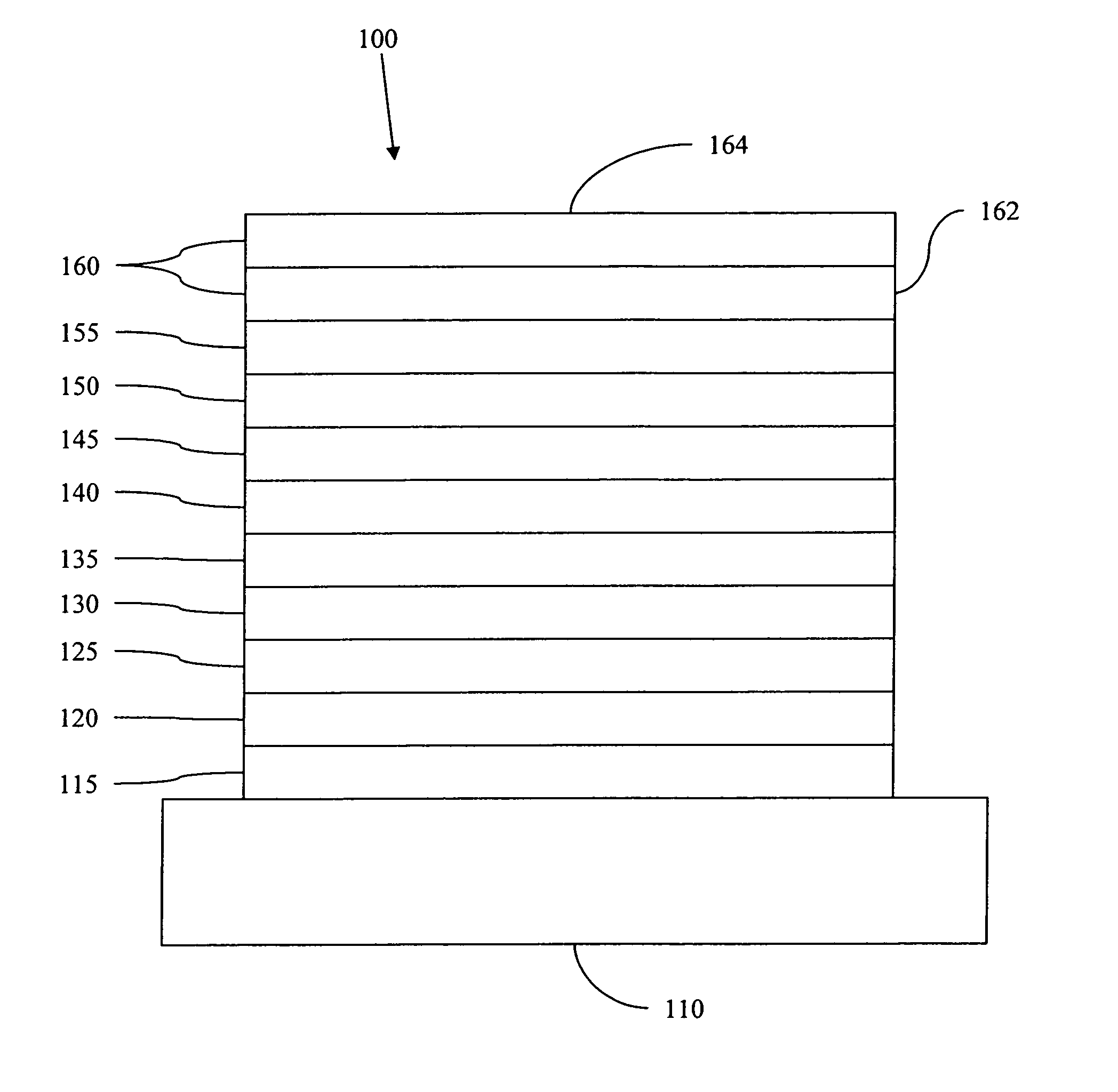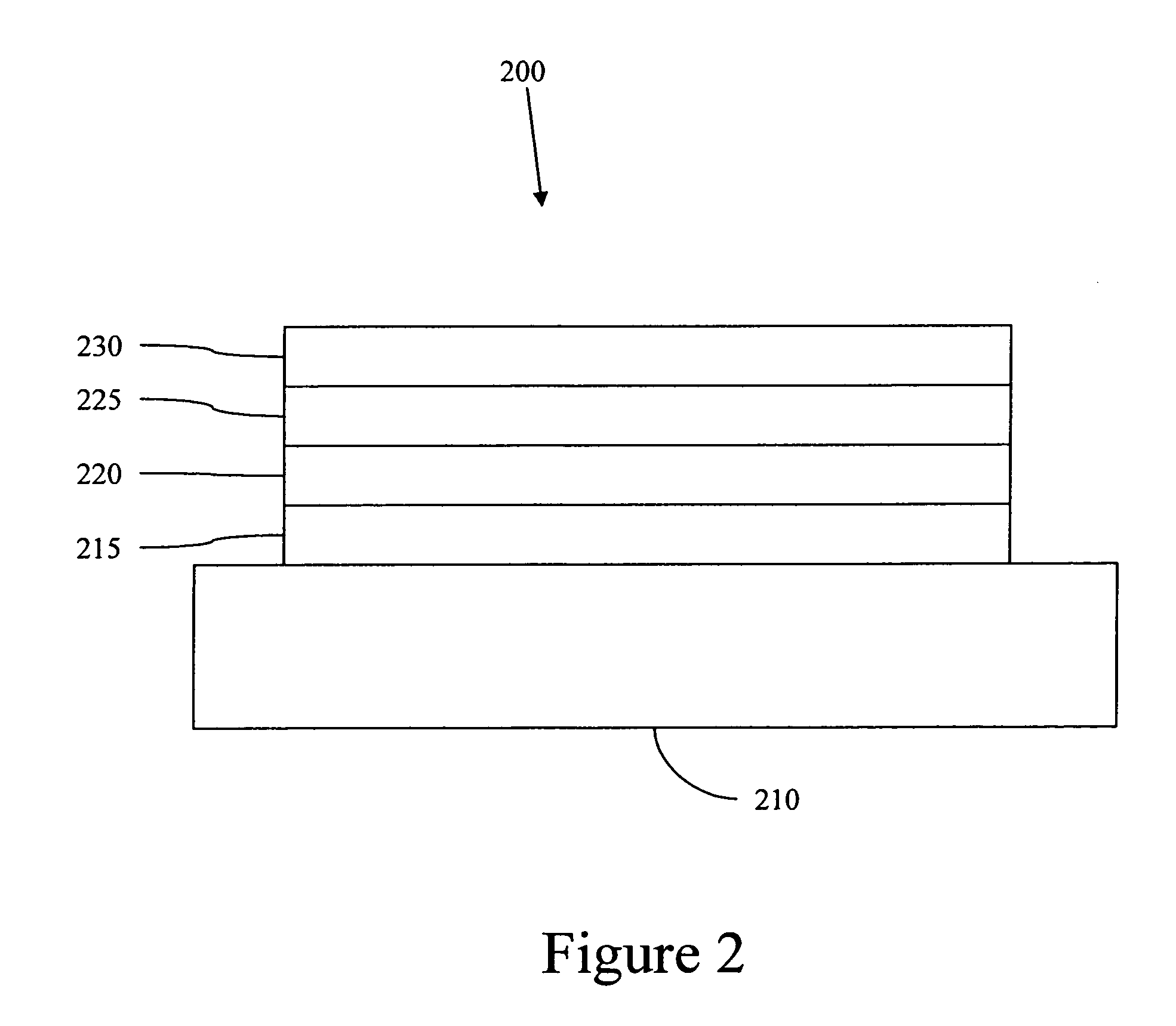Complexes with tridentate ligands
a tridentate ligand and complex technology, applied in the field of organic light emitting devices, can solve the problems of not being sufficiently stable for commercial devices and well known applications of carbene ligands in photochemistry
- Summary
- Abstract
- Description
- Claims
- Application Information
AI Technical Summary
Benefits of technology
Problems solved by technology
Method used
Image
Examples
example 2
[0243]
Synthesis Osmium Carbene Complex OS2
[0244]
[0245]To a Solution of CuBr2 (26.8 g, 120 mmole) in anhydrous Acetontrile (500 ml) at 0° C. was added t-butyl nitrite (21.1 ml, 160 mmole) dropwise, and then 3-amino-5-bromobenzotrifluoride (25 g, 104.1 mmole) was added dropwise. The mixture was stirred at 0° C. for 1.5 h, then at room temperature for 16 h. The mixture was then concentrated to half of its original volume in vacuo, and then poured into 1 N HCl (620 ml). This mixture was extracted with ether (400 ml). The organic layer was washed with 1N HCl, dried (Na2SO4), filtered, concentrated in vacuo. The residue was purified by flash column chromatography on silica gel using hexanes as the eluent and 18.33 g of OS 2-A was obtained. (57.8%)
[0246]
[0247]A 1000 mL round bottom flask was charged with 13.33 g of compound OS2-A, 12.43 g of benzimidazole, 1.668 g of copper (I) iodide, 3.15 g of 1,10-phenanthroline, 59.93 g of cesium carbonate, and 500 ml of N,N-dimethylformamide. The reac...
PUM
| Property | Measurement | Unit |
|---|---|---|
| time | aaaaa | aaaaa |
| time | aaaaa | aaaaa |
| internal quantum efficiencies | aaaaa | aaaaa |
Abstract
Description
Claims
Application Information
 Login to View More
Login to View More - R&D
- Intellectual Property
- Life Sciences
- Materials
- Tech Scout
- Unparalleled Data Quality
- Higher Quality Content
- 60% Fewer Hallucinations
Browse by: Latest US Patents, China's latest patents, Technical Efficacy Thesaurus, Application Domain, Technology Topic, Popular Technical Reports.
© 2025 PatSnap. All rights reserved.Legal|Privacy policy|Modern Slavery Act Transparency Statement|Sitemap|About US| Contact US: help@patsnap.com



